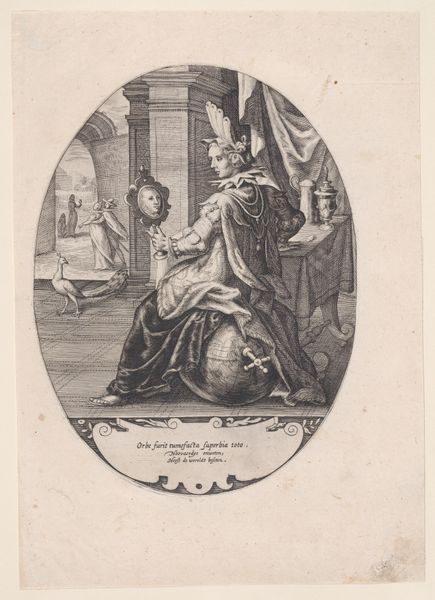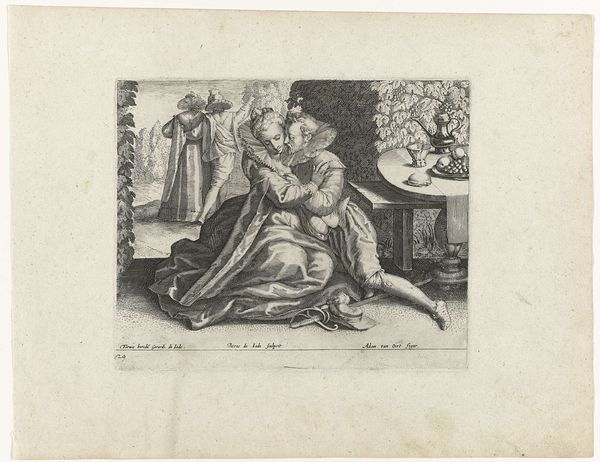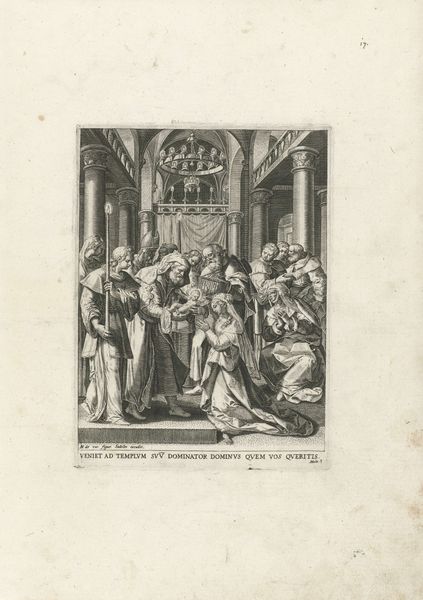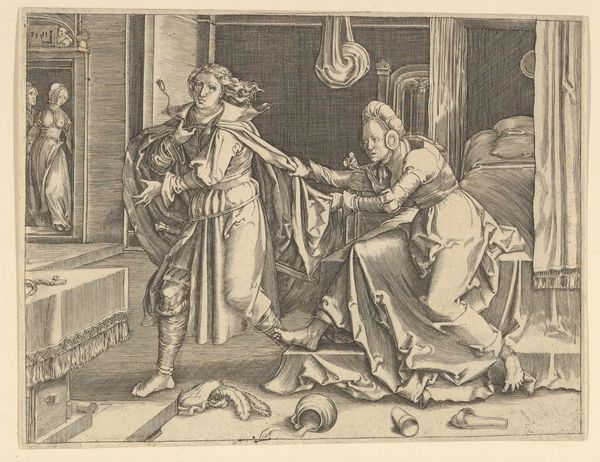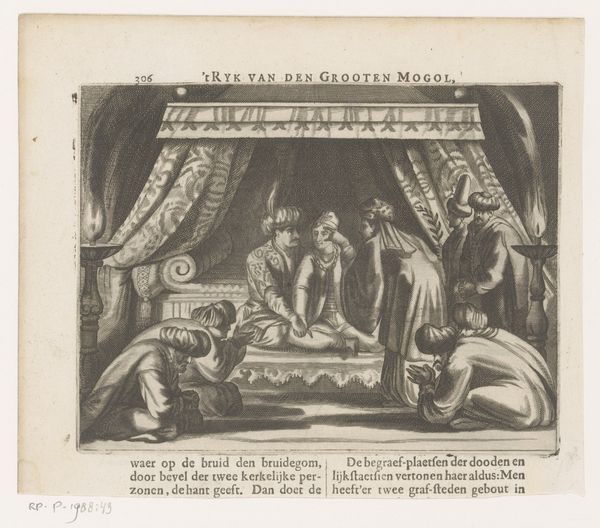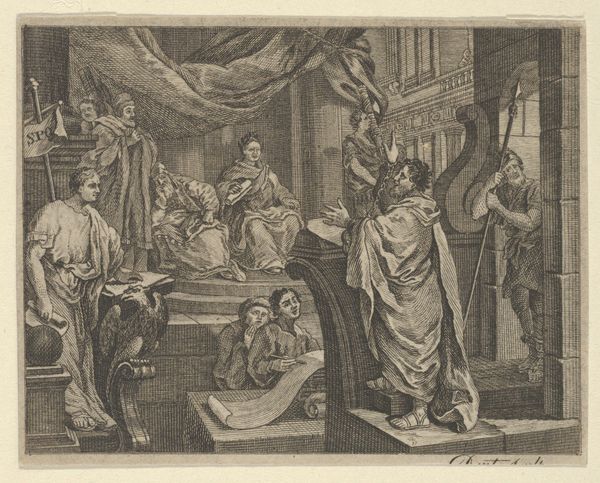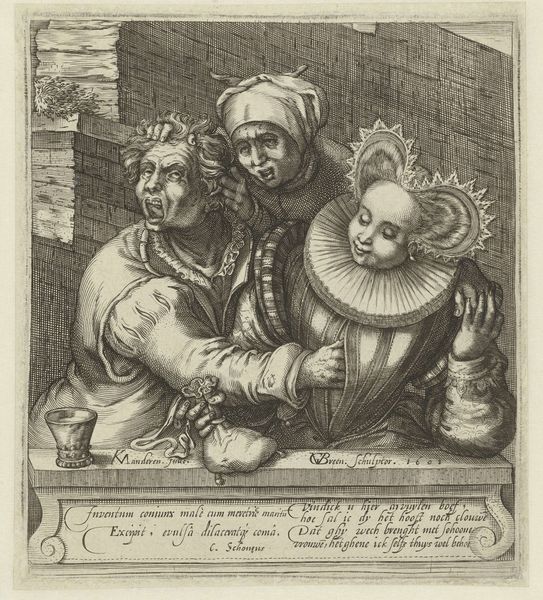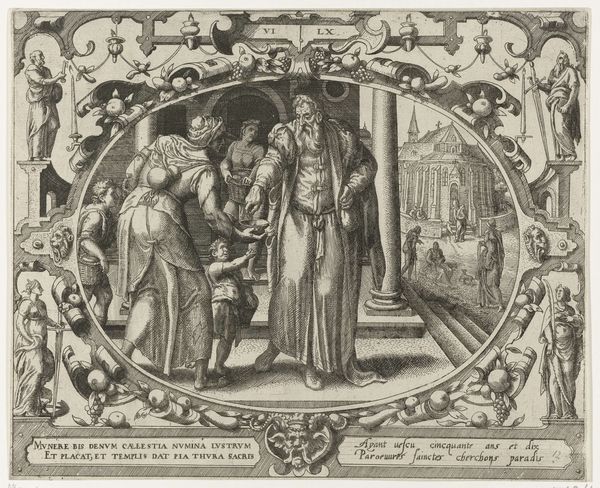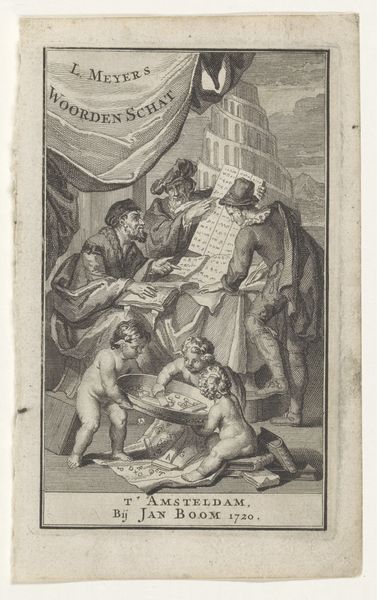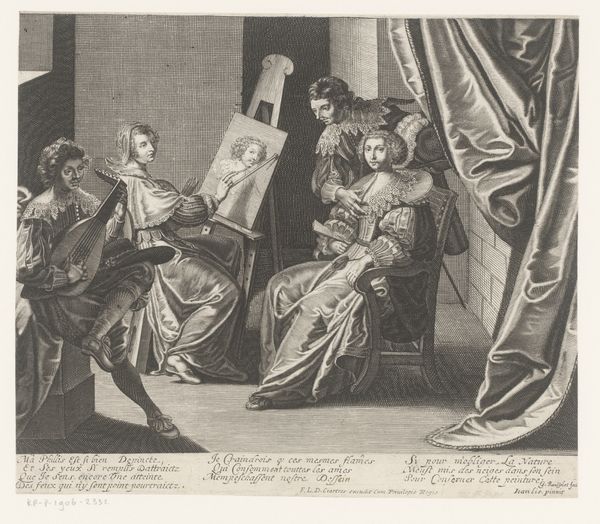
drawing, print, etching
#
drawing
#
baroque
# print
#
etching
#
old engraving style
#
figuration
#
line
#
history-painting
Dimensions: Plate (Octagonal): 7 5/8 × 9 5/16 in. (19.3 × 23.7 cm) Sheet: 7 11/16 × 9 7/16 in. (19.5 × 24 cm)
Copyright: Public Domain
Editor: This is "Lot and His Daughters," an etching made between 1625 and 1637 by Bernardino Capitelli, and it currently resides at The Met. I'm immediately struck by the density of the linework, how it almost obscures the figures, creating a murky and unsettling mood. How do you interpret the visual language used here, particularly considering the historical context of the artwork? Curator: Look at the heavy use of shadow, wouldn’t you say? This plunges the scene into near darkness. It is almost as if the artist wants us to experience the same moral murkiness that envelops Lot and his daughters. But consider this: what emotional weight does such representation carry in the context of Baroque art? Editor: I guess the shadow contributes to a feeling of guilt, maybe even shame? Curator: Exactly. Think about the symbols, too. The wine, the darkness, even the claustrophobic frame – each contributes to the narrative of transgression and the blurred lines of familial duty and sin. Are we invited to sympathize, or condemn? Editor: It's interesting, I originally focused on the visual darkness but now I am seeing a symbolic darkness as well. The story itself is disturbing. Curator: Indeed, the power lies in its ability to evoke discomfort and force reflection on complex moral issues that continue to resonate across centuries. Even in modern-day understandings of the Bible story. Editor: It really does make you think beyond just what is shown, into the history of how we depict difficult subject matter. Thank you. Curator: And thank you, it’s a good reminder that symbols are not static. They shift meaning as culture evolves.
Comments
No comments
Be the first to comment and join the conversation on the ultimate creative platform.

